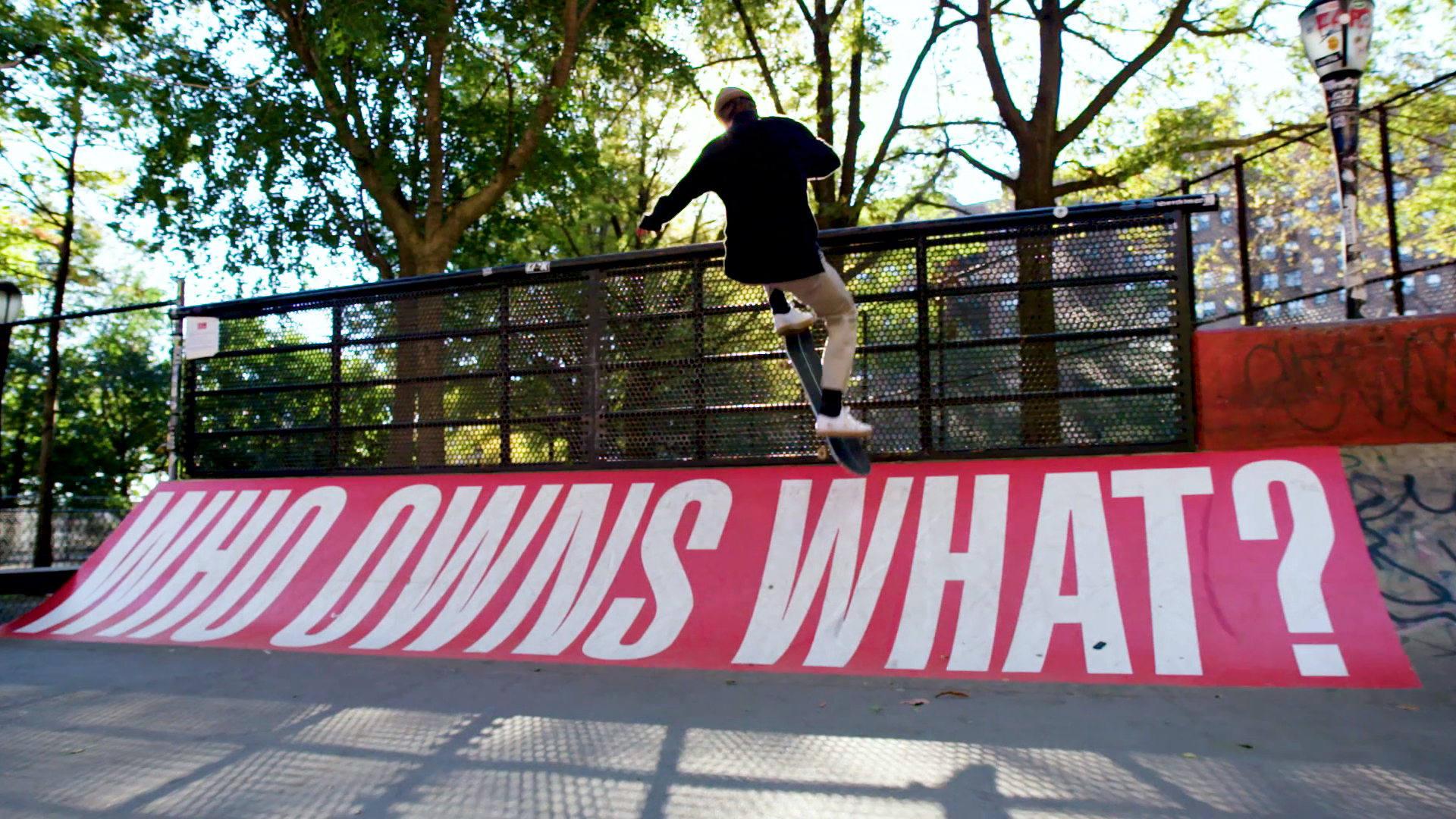
Production still from the Art21 Extended Play film, Barbara Kruger: Part of the Discourse. © Art21, Inc. 2018.
During the hectic closing months of 2017, one may have missed in November the semi-centennial of the Public Broadcasting Act. For us at Art21, the milestone is significant. The 1967 legislation gave historic recognition to programs built on “creative risks” and those that addressed “the needs of unserved and underserved audiences,” aiming at universal reach. Given Art21’s birth during another robust era of public media in the late 1990s, the history of broad support for the public interest intermingles with our values as an organization.
While much has changed over fifty years—especially now that we are ensconced within an attention economy driven by the internet—Art21 has doubled down on its belief in public trust and responsibility. The places where people access Art21 are inherently public realms, namely the internet and public television, and we cannot turn away from the rampant questioning of the value of these spaces and who owns them. Public space is being fought over, as demonstrated in the fervent conversations about net neutrality and by the scrutiny of public monuments that are sparking intense debates in cities worldwide. And people are fighting to hold their ground through public demonstrations, online activism, and grassroots organizing. As ever, artists are part of these conversations, providing us with new and illuminating ways of thinking about issues of public space, power, ownership, and what to do about them.

Aerial view of Nick Cave’s Heard•Detroit, staged as part of the exhibition Nick Cave: Here Hear at Cranbrook Art Museum, Detroit, 2015. Production still from the Art21 Art in the Twenty-First Century Season 8 episode, Chicago, 2016. © Art21, Inc. 2016.
In a New York Close Up film, premiering in February 2018, Doreen Garner’s work questions who should be memorialized. In another recent Extended Play film release, Barbara Kruger addresses a similar dilemma with graphic billboards, featuring the activated language for which she is known: Who is free to choose? Who speaks? Who is silenced? Although Kruger originally composed these texts in the 1990s, they continue to resonate.
With the start of a new year, we are taking stock of our past and welcoming back some artists who stirred our founder Susan Sollins to make a television program about contemporary art. Kruger is one, and her Art21 film captures her thinking about the unrelenting forces of power that triggered her to action thirty years ago; as she describes the question of public interest, “There are so many ways to make art—some of them more available to a general public than others.” Art21 was founded in recognition of that divide, and Kruger’s work took on the challenge of public space in a deft and interventionist manner, introducing contemporary art through unexpected yet familiar media like television and advertising.

Kimsooja’s A Needle Woman: Galaxy was a Memory, Earth is a Souvenir, 2014. Production still from the Art21 special, Kimsooja: Collaboration on Campus—Nanotechnology & Contemporary Art, 2015. © Art21, Inc. 2015.
Even as we look back, we are focused on an evolving future, filled with uncertain challenges and endless opportunities. In fact, we have an anniversary to celebrate this year: Art21 is turning 21! We are also ushering in a new approach to the editorial voice of the Art21 Magazine. This letter will be the first of four quarterly communiques from me. As a complement to our award-winning films, the magazine will focus on voices of artists with an eye toward broader themes and urgent topics while supporting a digital space for arts writing and maintaining our commitment to arts education.
For this issue, we ask, in the provocative spirit of Kruger: “whose public?” Here, we meditate on the evolving role of our public spaces (both physical and virtual) and on the power of the collective voice. Kruger states in the new film that the war on the public mind is an extension of forces that have been at play for a long time; she reminds us that through art we can find value and a means of resistance.



